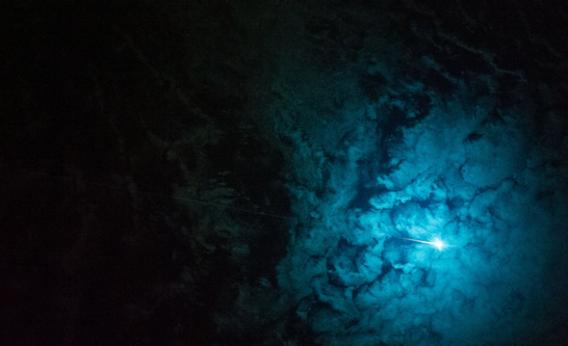Create a free profile to get unlimited access to exclusive videos, sweepstakes, and more!
Descent of the White Stork

The I in ISS is for “international” (the two S's are for “station” and “space,” not necessarily in that order). Many countries contribute to the orbiting outpost, which means investing money, research, and astronauts, and even sending up supplies.
One of those countries is Japan. Its space agency, JAXA, sent up a resupply cargo spacecraft in August 2013 filled with more than five tons of equipment and supplies. The spacecraft was called Kounotori-4 (“white stork”—imagery I love), or HTV-4 (for HII Transfer Vehicle). It carried mostly equipment for use on the Japanese Kibo ISS module, as well as some small Cubesats and—get this—a small robot named Kirobo that was equipped with speech and facial recognition software to assist Japanese astronaut Koichi Wakata in his research in space.
After a month berthed to ISS, and loaded with waste from the astronauts, it detached on Sept. 4, 2013. Three days later it was deorbited, sent on a trajectory that meant the final moments of HTV-4 could be seen from astronauts on-board the station. And what they saw was far more beautiful than I would have expected:
That’s stunning. As the spacecraft entered our atmosphere, it was moving at about eight kilometers per second (five miles per second). Its huge velocity and significant mass meant it rammed through the air, compressing the gas ahead of it violently. Compressed gas heats up, and so the air becomes hugely heated—literally glowing. In the end, the spacecraft’s energy of motion is converted into light and heat; the equivalent of the energy released by dozens of tons of TNT exploding, but slowly, over many seconds. The heat melts the spacecraft, and the fierce wind of re-entry blows this melted material away (in a process called ablation).
It was so bright it could easily be seen from hundreds of kilometers above on the ISS, where a fixed camera mounted on the station took that picture. The burning spacecraft lit up the clouds beneath it, the vapor trail of ablated material glowing behind it.
The astronauts watched the display from the Russian module, and also got video (the show starts about 3:00 in and gets better after another 45 seconds).
HTV-5 is scheduled for launch from Japan in July. In the meantime, SpaceX is scheduled to send another Dragon capsule with supplies to the ISS on March 30. As always when it comes to upcoming space missions, stay tuned!


























